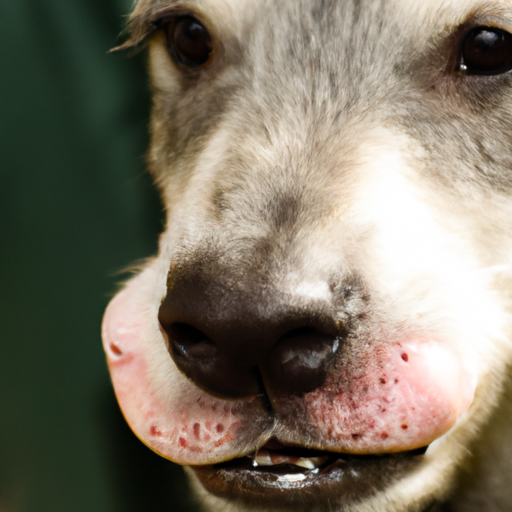As a caregiver to your furry friends, it’s essential to understand the importance of your dog’s oral health. A vital yet often overlooked aspect of this is the appearance and health of your dog’s gums. This article will guide you in understanding what your dog’s gums should look like and signs of potential health issues.
H2: The Healthy Color of Dog’s Gums
A dog’s gums, also known as gingiva, should ideally be a bubble-gum pink color. However, it can vary depending on the breed and individual dog. For instance, some dogs have black patches on their gums, which is normal if they’ve had them since birth.
- Bubble-gum pink: Ideal and healthy
- Black spots: Normal in certain breeds
The best way to understand your dog’s normal gum color is by regularly checking their gums so you can notice any changes.
H2: Changes in Gum Color and What They Mean
Sometimes, the color of your dog’s gums can change, indicating potential health issues. Here are some colors you may come across and what they could mean:
- Pale or White Gums: This could be a sign of anemia, blood loss, or shock. Immediate veterinary attention is required.
- Blue or Purple Gums: This indicates that your dog is not receiving enough oxygen. It could be due to respiratory issues or heart problems. Seek immediate veterinary help.
- Bright Red Gums: This could mean that your dog is overheated or has a systemic infection. Cool your dog down and consult a vet.
- Yellow Gums: This could be a sign of jaundice, indicating liver issues. Immediate veterinary attention is needed.
H2: Assessing Gum Texture and Hydration
Healthy gums should also be smooth and moist. Dry, sticky, or rough-textured gums could be a sign of dehydration or illness. To test your dog’s hydration, you can perform a ‘gum capillary refill time’ (CRT) test:
- Lift your dog’s lip and gently press on their gums using your index finger until the gum turns white.
- Release your finger and count how long it takes for the gum to return to its normal color.
- A healthy, hydrated dog’s gum should return to its normal color within 2 seconds. If it takes longer, your dog may be dehydrated or unwell.
H2: Regular Gum and Dental Care for Dogs
Regular dental care is crucial for maintaining your dog’s gum health. Here are some tips:
- Brush Your Dog’s Teeth: Use a dog-friendly toothpaste and brush to clean your dog’s teeth regularly.
- Dental Treats and Toys: These can help remove plaque and keep your dog’s gums healthy.
- Regular Vet Check-ups: Routine dental check-ups can help detect any potential issues early.
H2: Frequently Asked Questions
1. Q: My dog’s gums are naturally black. How can I check for gum discoloration?
A: In such cases, look for changes in the texture or color intensity. If there’s any doubt, consult your vet.
2. Q: How often should I check my dog’s gums?
A: Ideally, you should check your dog’s gums once a week. However, if your dog has had oral problems before, you might need to do it more frequently.
3. Q: My dog doesn’t let me touch his mouth. What should I do?
A: Try to make it a positive experience with treats and praise. If your dog still resists, seek professional help.
4. Q: Can bad diet cause gum disease in dogs?
A: Yes, a poor diet can contribute to dental issues in dogs, including gum disease. Feed your dog a balanced diet and consider foods that promote dental health.
5. Q: My dog’s gums bleed when I brush their teeth. Is this normal?
A: Occasional slight bleeding may occur, especially if you’re new to brushing your dog’s teeth. However, if it’s frequent or heavy, it could signify gum disease.
Remember, as a caregiver, you’re the first line of defense in your dog’s health. Regular checks and early detection can make a world of difference.



